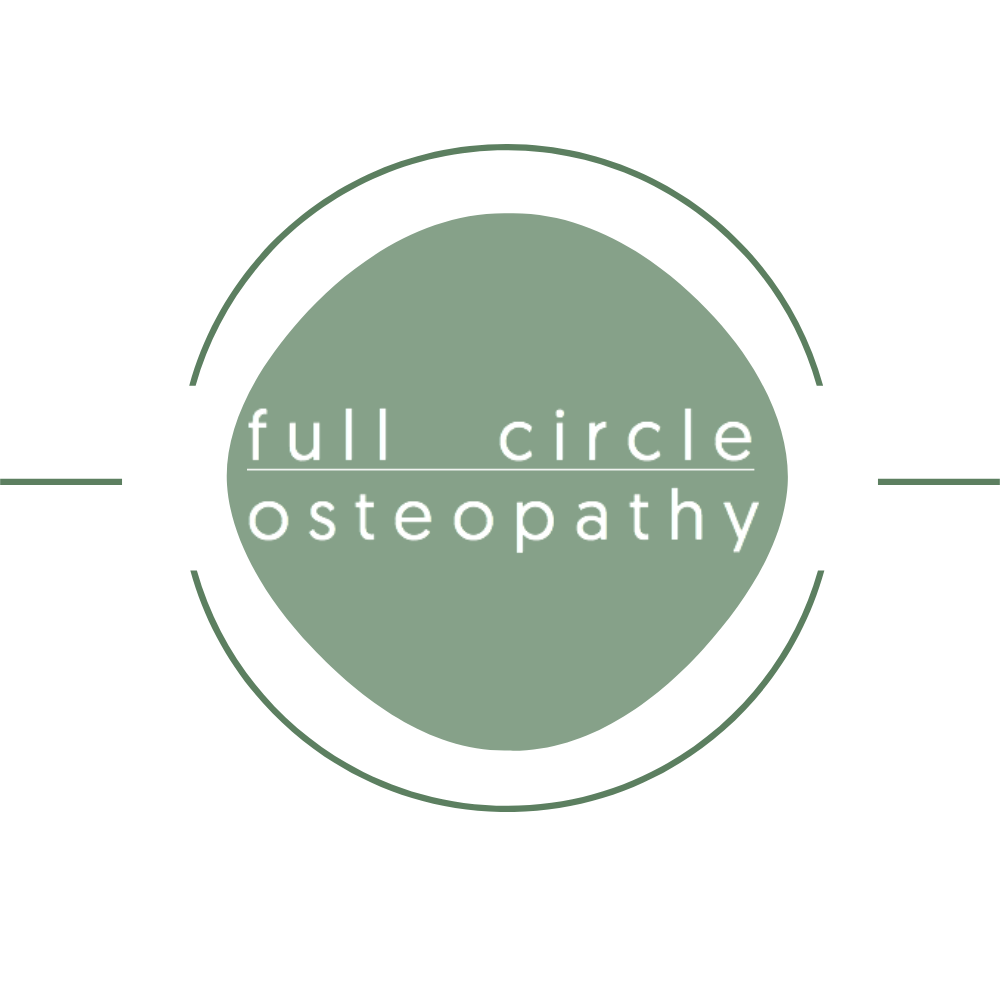First aid for injuries
We’re frequently asked, “What is the best way to manage a new injury?” here at Full Circle Osteopathy. There is an awful lot of advice out there when it comes to acute soft-tissue injury management. Here is a helpful guide to soft-tissue injury management, based on the most recent research available.
Is it RICE, RICER or PRICE?
Traditionally, acute soft-tissue injuries like ankle sprains have been managed using the RICE method (Rest, Ice Compression, Elevation). So, an athlete sprains their ankle and therefore follows these rules:
• Immediately rest to off-load the injured area
• Apply ice to reduce pain and swelling
• Compress the area using a bandage or other means to reduce swelling
• Elevate the injured area to promote reduction of swelling
Over the years, this method changed as research progressed. In came RICER, where the second ‘R’ stood for ‘referral’ (i.e. to a medical professional/osteopath/manual therapist). With PRICE, ‘protect’ was the added step, where advice was to initially avoid injuring the area more.
This method was eventually replaced by the acronym POLICE, standing for:
• P = protect (i.e. avoid further injury)
• OL = optimal loading (i.e. load the tissues appropriately to promote the best healing and reduce the risk of adverse effects including stiffness and weakness)
• ICE (i.e. ice, compression, elevation)
There is plenty of evidence to support the theory that early immobilisation of the injured body part helps to promote healing of torn tissues, but there is now a plethora of evidence suggesting this immobilised period must be limited to only the very early stages of the injury (approximately 24-48 hours), and early mobilisation in a gradual manner is the best way for the tissues to fully heal and get back to optimal strength and flexibility.
OK… so it’s now POLICE. Got it!
Hold your horses! While the POLICE method has been accepted as the ideal way to manage an acute injury for some time now, research has progressed again and new protocols are starting to emerge. Rather than calling the police straight away, evidence is starting to point towards a ‘PEACE and LOVE’ approach. Read on…
PEACE:
• Protection: Avoid painful movements for the first few days
• Elevation: Elevate the limb above heart level as regularly as possible
• Avoid anti-inflammatories: Avoid taking medications like ibuprofen and avoid ice.
• Compression: Apply elastic bandaging or tape to reduce swelling
• Education: Listen to your body and don’t overdo it with lots of massage treatments or unnecessary investigations such as imaging. Seek help from a professional early on.
And LOVE:
• Load: Re-load the tissues as pain allows
• Optimism: Get your head in the best space for optimal healing. Be positive and confident
• Vascularisation: Choose pain-free movement to increase blood flow to the injured tissues
• Exercise: Be active during your recovery to re-build strength and flexibility.
Notice the ‘avoid ice’ section. Recent research is suggesting that application of ice actually inhibits healing of the injured tissues by constricting blood vessels and reducing blood flow to the area. The body’s natural inflammatory response after injury sends a host of immune cells to the site of injury which help to clean-up and begin the repair of injured tissues. When blood flow is restricted, the cells do not reach the injury site as fast as they could, and the whole process is compromised. Whilst there is a place for ice in helping to reduce pain, it needs to be used at the correct time and for the correct amount of time.
Our best advice to you is to choose peace and love when dealing with a soft tissue injury. Ring us as soon as possible after the injury occurs, so we can advise you on the best route to recovery. The internet is full of conflicting information, so avoid trying to doctor yourself and seek help from a professional. After all, that’s why we’re here.
References
1. Physiopedia. 2021. Soft tissue injuries. [Online]. Available from: https://physio-pedia.com/Soft_Tissue_Injuries?utm_source=physiopedia&utm_medium=related_articles&utm_campaign=ongoing_internal. [Accessed 06 April 2021]
2. Dubois, B. and Esculier, J. 2020. Soft-tissue injuries simply need peace and love. British Journal of Sports Medicine. 54 (2). 1-5. Available from: https://bjsm.bmj.com/content/bjsports/54/2/72.full.pdf
3. Bleakley, C. et al. 2012. PRICE needs updating, should we call the POLICE? British Journal of Sports Medicine. 46 (4). 220-221. Available from: https://www.researchgate.net/profile/Philip-Glasgow/publication/51629423_PRICE_needs_updating_should_we_call_the_POLICE/links/55fc02d408ae07629e07d528/PRICE-needs-updating-should-we-call-the-POLICE.pdf

